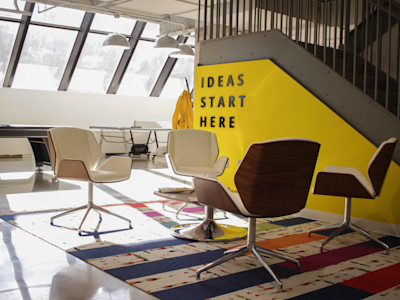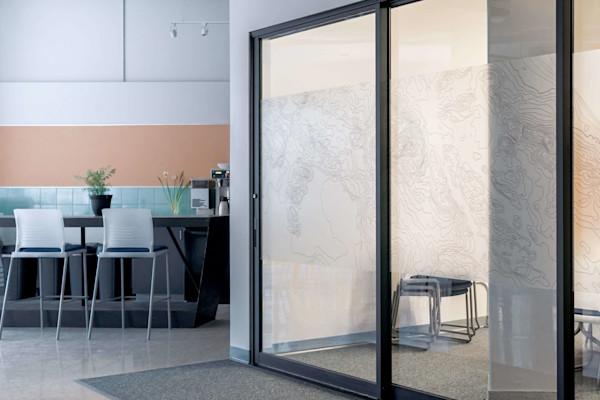Creating Workplace Well-being by Design

Edited April 2020
Happy employees make successful companies, and successful companies make people money. But if it were that easy, we would be surrounded by smiling moneymakers. What we can do at our businesses is to make employees as happy as possible and that means making an investment in their well-being. The best way to do that, according to the authors of The Healthy Workplace Nudge, is not to put money into wellness programs, but to switch the perspective and focus on their well-being. If you design in a way that “nudges” people to make healthier choices, they won’t need programs to achieve wellness because they won’t be sick.
What we can do at our businesses is to make employees as happy as possible and that means making an investment in their well-being.
Humans are funny creatures. Though we say we want autonomy, given the chance, we will follow the herd more times than not—especially if they are heading for something that makes evolutionary sense.

>> Control the design of your office with these pieces.
Though your staff might not be thinking of it on that level, when the group has the choice to sit OR stand at their desk, they will make choices. If they have stairs OR an elevator, they will take the stairs if others do the same. If there is a quiet space to unplug, they WILL disconnect. All these proactive choices lead to improved well-being by reducing stress through increased movement, socialization, and uninterrupted work time.
Environmental Control Nudging
The authors of The Healthy Workplace Nudge discuss “environmental control” as the capability of individuals, groups, or entire organizations to modify features of the physical workplace and choose a location, time, and how to work to better support their work needs and business goals.
All these proactive choices lead to improved well-being by reducing stress through increased movement, socialization, and uninterrupted work time.
Policies are put into place that uphold these choices and the features are accessible to everyone. The bottom line? People are nudged towards making design choices that enhance their personal and collective well-being.
Three levels of Well-being Nudges
These nudges are created at three levels: organization, group, and individual.
Organizational nudges. These include spaces that offer employees choices over things like mobility and unassigned workspaces. For instance, select a site that can promote walking with outdoor trails. Choose a walkable neighborhood for the office site. Include pedestrian amenities along outside paths: benches, movable chairs, and tables.
Group nudges. Provide a variety of types, sizes, and locations of meeting spaces for employees. Within the spaces, flexible furnishings provide a visual nudge to let people arrange the setting to fit the work as needed. Conveniently located small meeting spaces near individual workspaces can nudge people to take a short walk to the meeting. Social and interaction spaces (e.g. cafeteria or lounge) located on main circulation routes, or in prominent locations within the building, can nudge workers to take a break, interact with a work friend, and feel recharged.
Individual. Examples of workspace features that provide control at the individual level include adjustable furniture (seating, tables, and lighting) and tools to organize work materials. A height-adjustable table coupled with technology can nudge workers to vary their position throughout the day. Changing posture during the day improves circulation and can reduce the risk of musculoskeletal injury. Relocate overflow to a common area with lockers, or shared storage, which also provides a surface to congregate.
>> Shop our adjustable furniture collection.

In most cases, companies build with technology in mind, not people. And though it does take tech to make a business work, you don’t have to worry about technology’s well-being. When an office is designed well, with the human (body and spirit) in mind, employees are happier at work. And if you remember from our humble beginnings, it takes happy people to make a successful company. Want to explore more? Check out these related topics:



